| Wadi's, Deserts, Ocean, Arabic Hospitality - Enjoying Oman By David Thompson Mar 2, 2008 - 7:09:00 PM |
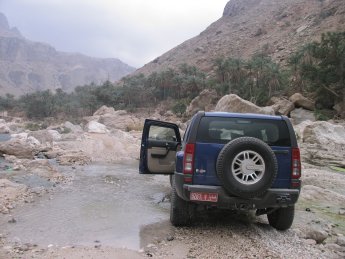 |
| Our Humvee in a rugged wadi |
We tried pacing several of the cars that were passing us in the desert. I revved the vehicle up to 200 KM/hour but they were still pulling away! Thats 125 miles/hour and they were going even faster. With the open roads, a country of under 3 million people, and very inexpensive petrol, Oman is a place for pure driving freedom.
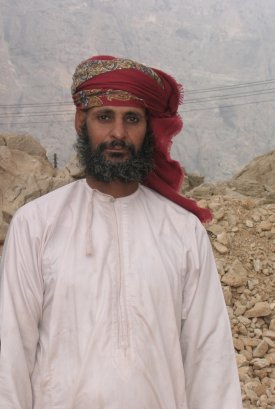 |
| Oman man living in village in a wadi |
We have camped out all over, on the beach in the desert. One night was so humid we could barely sleep until it actually cooled down nicely after 3am. Another night we camped on the ocean near Salala, (mistake!), which is Oman's largest city in the south and off roaders were revving their vehicles ALL NIGHT up and down the beach. Camp anywhere, drive anywhere! We made our own road 2 clicks in from a dirt track, up a small wadi for one campsite. Under the Arabian nights in the middle of the desert, the stars shine so brightly that you are almost stained with their tears as you look upwards through your own humble tears.
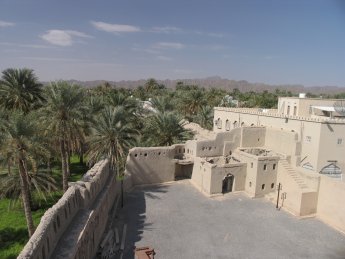 |
| Taken from the old fort in Nizwa |
The Al Joota cave, located about 35 minutes from downtown Nizwa is very touristy now and way overpriced. There is a train (when working) that takes you from the museum/entrance to the human made cave entrance. Unfortuantely no photography is allowed inside - there are some nice calcium formations inside with the highlight being a glimpse at the underwater lake that contains small blind fish. The tour guide speaks in Arabic and English.
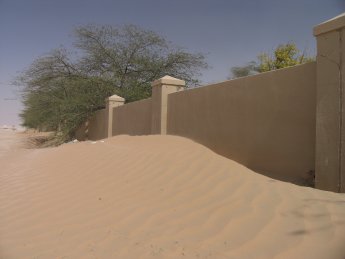 |
| Sand piled up against wall near desert Oasis |
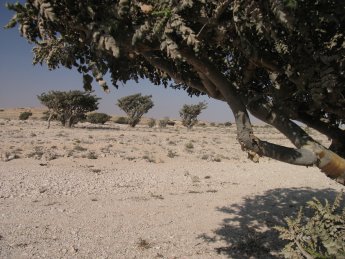 |
| Example of Frankinsense trees- sap from the bark is used for perfume |
Also some quick history about Oman. In 1970 Sultan Quaboos forcefully took power from his father - at the time there were very few paved roads in the country and oman was essentially 3rd world. In the relatively short number of years since then, Oman has really developed under his control & direction.
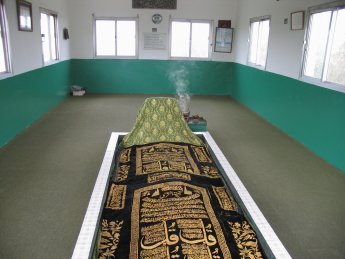 |
| Prophet Job's Tomb |
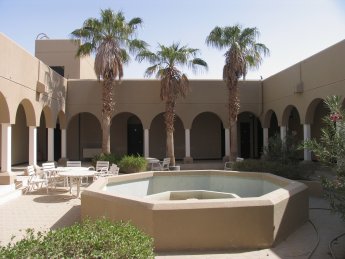 |
| Interior courtyard of the Qitbit Motel |
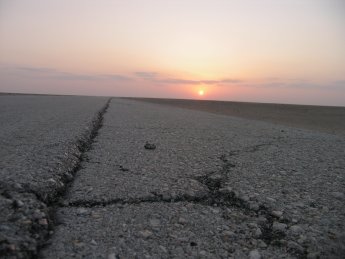 |
| Oman sunset over cracked road |
For more information about the Qitbit Motel you can use the following contact methods. Email Jaynul (hotel manager) at qitbit_motel@rediffmail.com or call: 00 968 99085686.
Additional Notes:
These notes cover some of the highlights and general concerns a first time visitor to Oman may have.
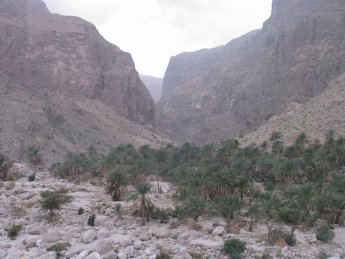 |
| Wadi canyon |
The khareef season is from June through September and affects the southern coastal Salalah region of Oman. This is when the vegetation turns very green and the climate is much more moderate than most of the rest of the Arabian Peninsula. This area receives an abundance of rain! This is also the height of the tourism season in southern Oman and nice hotels will be booked in advance.
The Omani's in general are very friendly and helpful towards tourists. The people I stayed with spoke of single women having no problem traveling within Oman. ATM's are plentiful in Muscat and Salalah and are also found in the larger towns. The Bank of Muscat ATM's are your best bet. ATM's are far and few between during the drive from Nizwa to Salalah. There are plentiful car rental companies in Muscat & Salalah. Typically for the cheaper 4-door models, expect to pay $20 to $30/day with discounts given for weekly rentals.
Hotels run from about $20/night all the way up to several hundred at the 5-star resorts in Muscat & Salalah. Typically most of the hotels/motels along the highway between Muscat & Salalah start around $50. Camping in the desert is wherever you want really with tons of open spaces.
If you plan to drive down to Yemen and take the car with you, you will need a specific letter from your car rental company stating that it is ok to do so. Most car rental companies will not provide this letter. If you do not have this letter, you can park your car at the border and take a bus or van into Yemen.
Wadis are river beds (usually dry ) which cut through the mountains or deserts. During intense rains these can dramatically fill up and become flowing torrents in a matter of minutes. Main highways that cross Wadi's usually have warning red poles and if the water is up to the red paint on the pole, do not cross. There are hundreds of Wadis within several hours of Muscat and they afford one superb off roading opportunities.
Oman has a very long coastline and lots of diving opportunties. There is coral off its coastline and the water clarity can be fantastic. Main dive shops are located in Muscat & to the north as well as Salalah in the south.
Muscat is a city spread out over about 45 KM along the coast. Lots of white buildings in stark contrast to the brown hillsides. Highlights we visited include the National Sultan Quaboose Mosque and the Mutrah Souk which contains lots of garment shops and some gold shops. The Arabic Festival is also a must see highlight if you are visiting during parts of January and February.
Oman is an Islamic country so dress appropriately. Long pants are a must other than at the pool or beach resorts. Women may consider head scarves although I saw many non Muslim women in all parts of the country without head scarves. During the holy month of Ramadan do not eat food in public from sunrise to sunset.
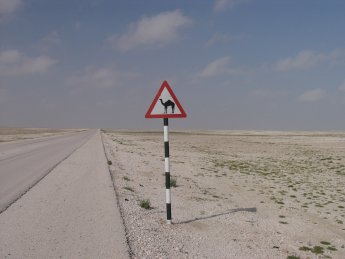 |
| These camel crossing signs are all over the main highway in the desert |
There is a lot of Indian food in Oman - due to India's influence in this part of the world as well as the fact there are many Indian immigrants living in Oman. The cheapest food is at the coffee shops where you can get basic chicken and meat dishes with Indian roti/chapati (breads) or rice as well as often Indian cooked Chinese food. There are lots of restaurants in the the towns and always a restaurant at any of the Oasis's located along the N/S desert highway connecting Muscat to Salalah.
What is referred to as a "siesta" in some of the South American countries and in Spain is also a part of the Oman culture. Typically from the hours of 1pm to 4pm all businesses close. The exception being most restauarants will stay open during these hours. At 4pm the businesses reopen and will stay open until 8 or 9pm.
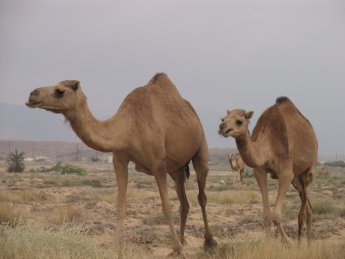 |
| Typical camel crossing! |
